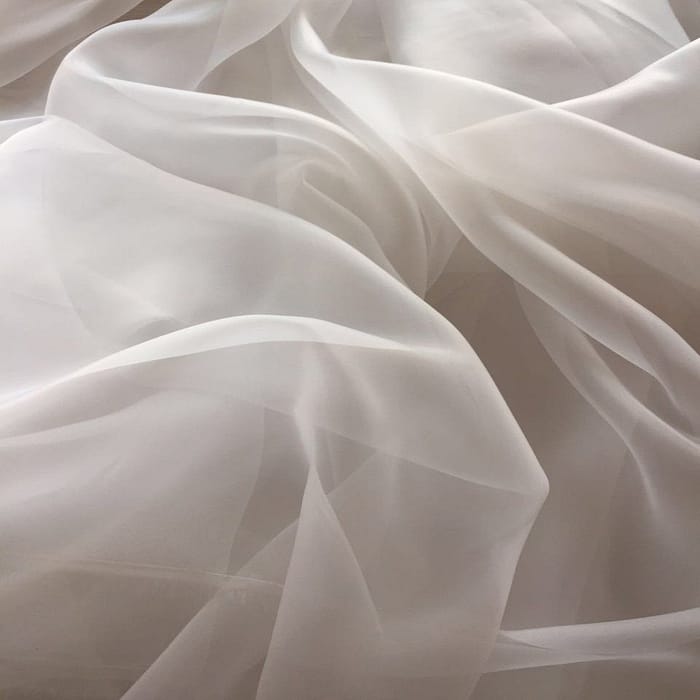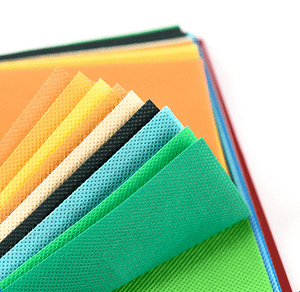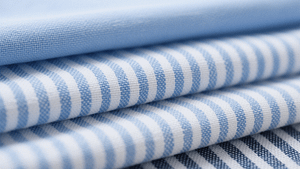Introduction
Organza fabric is the embodiment of ethereal elegance—light as air, yet structured enough to shape some of fashion’s most iconic silhouettes. Known for its transparency, crisp texture, and subtle sheen, organza brings an unmistakable grace to everything from bridal gowns to decorative accents.
Despite its delicate look, organza leaves a lasting impact through its unique ability to combine softness with form. Whether made from luxurious silk or practical synthetics, this fabric remains a favorite in high-end fashion, special events, and artistic design.
Origins and History
Organza has a rich history that dates back to the ancient silk trade routes. Its name is believed to originate from “Urgang,” a historical Central Asian city known for silk production. The fabric itself likely began in China, where skilled artisans developed fine, transparent silk weaves that would later inspire the organza we know today.
By the Middle Ages, organza had made its way into Europe, prized for its elegance and luxury. It was used by nobility and royalty for layered garments and decorative pieces. With time, technological advances allowed the fabric to be produced in synthetic forms, broadening its reach and affordability. Today, organza maintains its status as a symbol of refinement and artistry across both couture and commercial design.
What Is Organza Fabric?
Organza is a sheer, lightweight fabric woven in a plain weave pattern using tightly twisted filaments. Traditionally made from silk, modern organza is also commonly produced using synthetic fibers such as polyester or nylon, which offer increased durability and affordability.
What sets organza apart is its crisp hand feel and slightly stiff texture, which allows it to hold shape while still appearing airy and delicate. The transparency of organza is a result of its fine threads and open weave, giving it an ethereal, almost weightless quality. Whether used in layers for volume or as a single sheer overlay, organza adds elegance and structure to any design.

Key Characteristics
Organza is renowned for its unique balance of delicacy and structure, which makes it both beautiful and practical in fashion and decor. Its main characteristics include:
- Sheerness and Transparency: The open weave and fine threads give organza a translucent appearance, making it ideal for layering and decorative effects.
- Crisp Texture: Organza holds its shape well, thanks to its slightly stiff, papery feel. This makes it perfect for creating volume and structure in garments.
- Lightweight Feel: Despite its stiffness, organza is extremely light, contributing to its floating, ethereal quality.
- Subtle Shine: Whether made from silk or synthetics, organza typically has a gentle sheen that enhances its elegance.
- Breathability: The loose weave allows air to pass through easily, keeping it cool and comfortable to wear—even in multiple layers.
Types of Organza
Organza fabric comes in several variations, each offering unique qualities in texture, finish, and use:
- Silk Organza
The most luxurious form, silk organza is prized for its natural sheen, smooth feel, and exceptional breathability. It’s lightweight yet structured, ideal for high-end bridal and couture garments.

- Polyester Organza
A popular synthetic alternative, polyester organza is more affordable and wrinkle-resistant. It retains the crispness and translucency of silk but with added durability, making it suitable for both apparel and decor.

- Nylon Organza
Softer and more flexible than polyester, nylon organza is strong and holds up well to handling, making it useful in costumes, crafts, and accessories.

- Crushed or Textured Organza
This version features a deliberately wrinkled or puckered finish, adding dimension and visual interest. It’s often used in artistic or dramatic fashion pieces.

Production Process
Organza fabric undergoes a precise manufacturing process to achieve its signature lightness, stiffness, and transparency. Whether made from silk or synthetics, the steps generally follow a similar pattern:
| Step | Description |
|---|---|
| 1. Fiber Selection | High-quality silk, polyester, or nylon fibers are selected based on the desired fabric type. |
| 2. Filament Spinning | Fibers are extruded (synthetics) or reeled (silk) into long, fine filaments. |
| 3. Twisting | The filaments are tightly twisted in both directions to create a strong, crisp yarn. |
| 4. Weaving | The yarns are woven in a plain weave—simple over-under interlacing—for maximum transparency and stability. |
| 5. Degumming & Scouring | In the case of silk, the fabric is degummed to remove sericin; synthetic versions may be scoured to clean the surface. |
| 6. Finishing | The fabric is treated with stiffeners or heat-set for added crispness, and optionally dyed, embroidered, or embellished. |
| 7. Inspection & Packaging | Final quality checks are done before the organza is rolled, cut, and shipped for use. |
Common Applications
Organza’s distinctive combination of lightness and structure makes it a favorite in both fashion and decorative design. Its versatility spans across the following key areas:
- Fashion
Organza is a staple in bridal gowns, evening dresses, and high-fashion collections. It’s used for overlays, puffed sleeves, skirts, veils, and trains—adding volume without weight and lending a graceful, ethereal aesthetic. - Accessories
Organza appears in items like scarves, ribbons, belts, and hair adornments, where its shimmer and structure offer visual interest and elegance. - Home Decor
In interiors, organza is often used for sheer curtains, table runners, decorative chair sashes, and event backdrops. Its translucency allows light to pass through, creating a soft and romantic ambiance. - Crafts and Costumes
Lightweight and easy to shape, organza is a popular choice for costumes, stagewear, and DIY craft projects. It adds flair and texture while being easy to layer or manipulate into shapes.
Its adaptability to both visual drama and delicate detailing makes organza a go-to material for applications that require both beauty and form.

Care and Maintenance
Proper care is essential to preserve the delicate beauty and crispness of organza fabric. Here are some tips to keep your organza garments and decor in top condition:
- Washing: Silk organza is best dry-cleaned to maintain its sheen and structure. Synthetic organza can often be hand-washed gently in cold water with mild detergent. Avoid wringing or twisting the fabric.
- Drying: Lay flat or hang to air dry away from direct sunlight to prevent fading and damage. Avoid using a dryer as heat can cause shrinkage or loss of stiffness.
- Ironing: Use a low heat setting and press with a cloth between the iron and fabric to prevent scorching. Steam ironing is recommended to smooth wrinkles gently without flattening the texture.
- Storage: Store organza garments loosely folded or hung to avoid deep creases. Keep in a cool, dry place, away from sharp objects that could snag the fabric.
With mindful care, organza can maintain its gossamer lightness and lasting impact for many wears or uses.
Conclusion
Organza fabric remains a timeless symbol of elegance and delicacy, balancing its gossamer lightness with a lasting structural impact. From its rich history rooted in silk craftsmanship to modern innovations with synthetic blends, organza continues to captivate designers and consumers alike.
Its sheer transparency, crisp texture, and subtle sheen make it a favorite in bridalwear, evening gowns, and decorative accents. While it requires careful handling, the visual drama and sophisticated air organza imparts are unmatched. As sustainability and technology shape the future of textiles, organza adapts gracefully—ensuring it stays woven into the fabric of fashion and design for generations to come.






